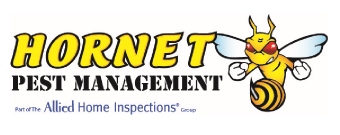Pigeon Removal
Feral pigeons can be public health pests. They can accumulate wherever there is food and shelter, and can take up residence almost anywhere, including around houses, tall city buildings or schools. As well as being a nuisance and causing extensive damage to property, feral pigeons can also pose a risk to human health.
Feral pigeons are common in the urban environment and although they are generally considered to be no more than a nuisance, they can potentially pose a risk to human health. Pigeons and their droppings can also cause damage to the buildings they reside, perch or nest in or on.
Potential health risks
Potential health risks and examples of damage include:
- Transmission of diseases.
- Attraction of ticks, mites, cockroaches and rats.
- Unpleasant odour and noise issues.
- Damage to buildings and monuments due to the highly corrosive nature of pigeon droppings.
- Extensive damage to air-conditioning units and other roof top machinery.
About pigeons
Feral pigeons are descendants of domestic homing pigeons that were introduced to Australia from Europe. Increased urban development has resulted in an increase in the number of feral pigeons due to the large number of accessible nesting spaces and readily available supply of food and water. Pigeons are capable of breeding throughout the year and do not migrate far from their birthplace; this can make it difficult to remove them from their location.
Identifying feral pigeons
Feral pigeons can be grey, brown, or white, but are usually grey in colour with
two black bars across each wing and iridescent feathers around the neck. There are no visible differences between males and females.
Domestic pigeons, such as those kept as pets or for racing, are essentially the same birds as feral pigeons; however, domestic pigeons can be identified by the presence of a tag around one of their legs.
If you have a pigeon problem, there are many techniques that can be used to
reduce or remove the population. Implementing non-lethal control techniques
will provide the most effective long term results. The best way to minimise or
prevent the nuisance caused by feral pigeons is to control where they roost, nest and feed.
Removing food sources
The most effective way of discouraging feral pigeons from infesting houses and
public areas is to not feed them and remove any potential food source (for example pet food). The number of pigeons in an area is determined by the availability of a sustainable food supply. A plentiful food supply encourages year round breeding; therefore, the removal of the food source will result in less breeding and will also encourage the pigeons to move to another location.
Proofing
Pigeon proofing your building will prevent pigeons from gaining access to potential nesting or roosting sites. This includes sealing any gaps into buildings and under eaves with mesh or wooden panels, or with more extensive renovations. Pigeons commonly perch on sites such as eaves, roofs and window ledges. A licensed pest control operator can install products such
as mesh, wires, spikes and gel in these locations to prevent pigeons from
landing.
Nest removal
Regular removal of nests will, in the long term, help to discourage persistent
pigeons from nesting in a particular area.
Scare devices
Scare devices such as audio or visual deterrents can discourage pigeons from
roosting or nesting, however the existing pigeon problem must be eliminated firstly. These devices will not deter birds that have been nesting at the site or that where born at the site they will only HELP prevent new birds infesting the areas. This is usually only a short term solution.
Trapping
Pigeons caught and killed by trapping can be replaced by new populations
rapidly. As with any control technique, the source of food must be removed otherwise trapping may have minimal effect in reducing pigeon numbers.
Poisoning
This process must be carried out by licensed pest control operators. A
painless narcotic (alpha-chloralose) is added to the food source and, once
consumed, causes the birds to overdose and go to sleep. The birds should, in
theory, consume the narcotic and sit and wait to be picked up; however, some birds may feed and fly off, and as a result can die an inhumane death. The poison is not specific to pigeons and consequently other non-target birds may be affected. This method is difficult in most areas and can cause additional problems where the public anger.
